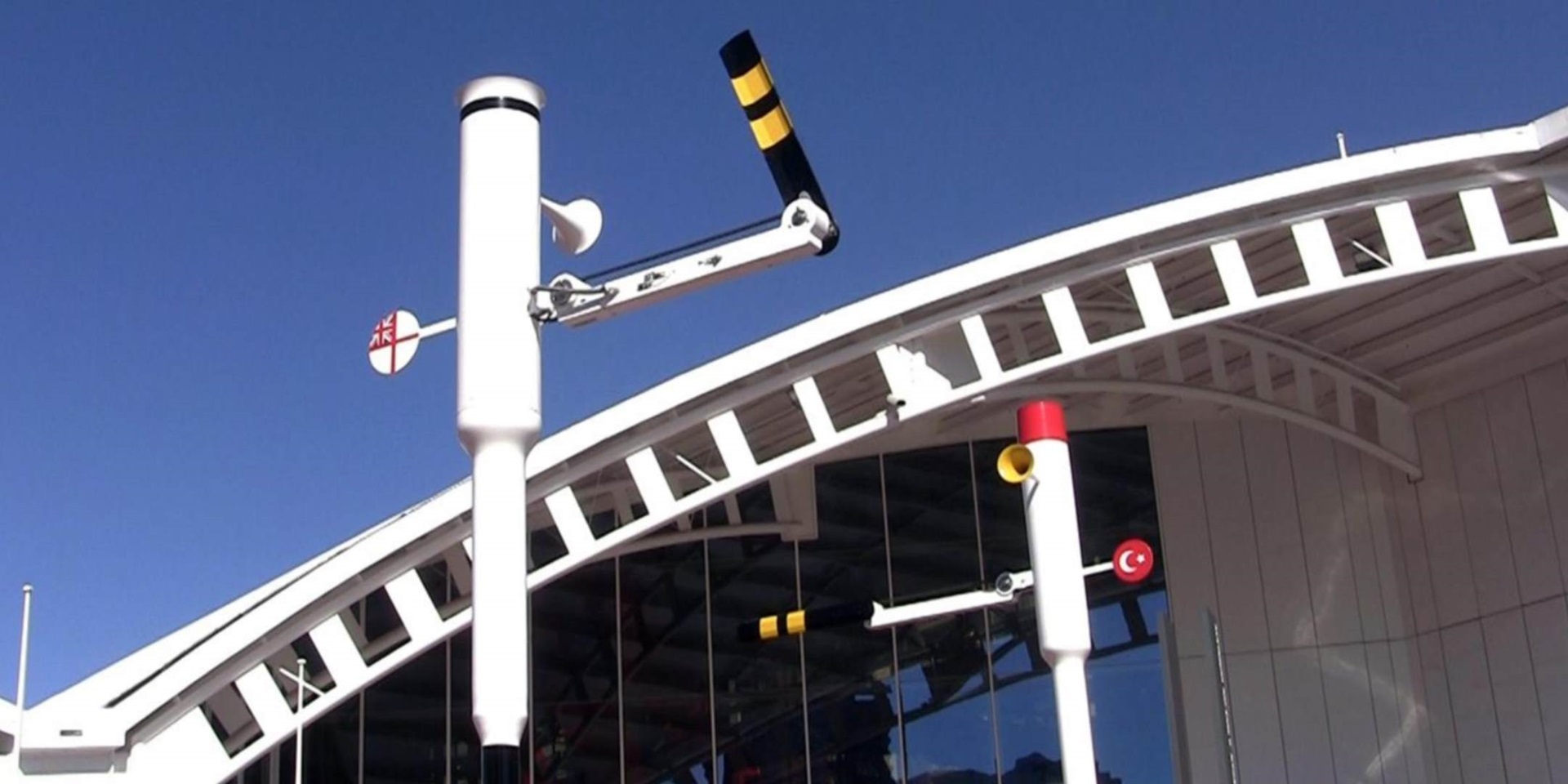
During World War I, Australia’s only remaining RAN submarine, HMAS AE2, made a daring and hazardous incursion into the Dardanelles and the Sea of Marmara. This emphatic act by Captain Henry Stoker and his 31 Australian and British officers and crew came on the very first day of the Gallipoli campaign, 25 April 1915.
The following five-day cat-and-mouse pursuit by the Ottoman navy ended with Stoker’s capitulation. After AE2 was damaged in an encounter with the much smaller Ottoman torpedo boat Sultanhisar, commanded by Ali Riza with 17 crew, Stoker scuttled the submarine on 30 April. Riza accepted their surrender, took the 32 men on board and clothed and fed them before steaming to Istanbul (then Constantinople). There Riza handed them over to Turkish authorities as prisoners-of-war, rather than to Turkey’s axis ally Germany, a choice that saw him slighted by the German authorities. The submarine’s capitulation was a significant naval achievement for Turkey in the opening salvos of the invasion of its lands at Gelibolu (Gallipoli).
HMAS AE2’s crew with mascot and dog at Malta 1915. Image: Photographer unknown ANMM Collection 00051787.
Sultanhisar’s crew, date unknown. Image: Photographer unknown Turkish Naval Museum.
These events made headlines in both countries as heroic and decisive actions in a campaign that created ever-increasing ripples as the decades passed.
The actions of the crews of the submarine and the ship during those five days were then quietly overwhelmed by the carnage of the land battle on the peninsula, and eventually were slowly absorbed into the foundation stories of both nations.
AE2 at Portsmouth. Image: ANMM Collection 00015862.
The Mission: ‘run amuck’
HMAS AE2 was the first Allied submarine to penetrate the Ottoman minefields in the Dardanelles. In its mission to ‘run amuck’ [sic], it had great success in diverting Ottoman resources and disrupting shipping and supply lines during the Allied campaign. Stoker’s men spent the next three years in Turkish camps, during which four of them died.
Cutaway drawing showing AE2 1913-1915. Image: Watercolour by Tiffanie Brown 2000 for The Australian Centenary History of Defence Volume III / ANMM Collection 00037289.
Brand new submarine AE2 and some of the crew, February 1914. Image: S Cribb / ANMM Collection: 00015813.
On the other hand, the captain and crew of Sultanhisar, the heroic actor in this early defence of Gelibolu, were bestowed with accolades by the Sultan. In May 1915, after another tour of duty in the Sea of Marmara, Ali Riza was presented to the Sultan, who awarded a gold watch to each officer and a silver watch to each member of the crew, on top of cash ‘equivalent to triple salaries’. Riza was promoted and eventually became an admiral.
Upon liberation Commander Henry Stoker became an actor on the stage and published his account of the engagement, Straws in the wind, in 1925. Captain Ali Riza reported his account in an interview with a journalist, which was published in 1947 and in English in 2008 (Vecihi and Hatice Basarin – Beneath the Dardanelles 2008). Although accounts differ, what is clear is the impact the engagement had on both their lives.
On board Sultanhisar c1915. Image: Turkish Naval Museum.
Sultanhisar with crew, c1915. Image: Photographer unknown / Turkish Naval Museum.
So how to commemorate this century-old engagement in the Dardanelles and Sea of Marmara in a museum today, in the 21st century? The past 100 years have seen close connections between Australian and Turkish peoples, especially in the field of shared histories, national memory and commemoration.
Johnnie and Mehmet concept drawing detail. Image: Alexander Knox 2015.
Remembering AE2 and Sultanhisar
Recent work on the wreck of AE2, 70 metres below the surface in the Sea of Marmara, has been the catalyst for new museum programs to commemorate the engagement. After a Turkish–Australian collaboration of nearly 20 years to locate and protect it, the Australian National Maritime Museum now has shared responsibility with the Government of Turkey to monitor and protect the wreck.
Maritime archaeology is one way for the museum to communicate and explore the impacts of the engagement. Another is in exhibition form, through dramatic storytelling in the museum’s attraction Action Stations and more conventional artefact-based displays in the museum’s other core galleries. A third method is an interpretive art piece, located outdoors in the museum precinct as a work of public art.
The challenge for a public art project was to interpret a very complex geopolitical–historical episode in an artwork that would also excite interest and introduce the engagement to a broad spectrum of visitors, viewers and passers-by. With this work, we aim to raise the profile of the maritime story in the Gallipoli/Gelibolu narrative.
Setting clear objectives in the artist’s brief was critical to the success of the project.
Importantly, the work was to be bicultural in exploring the context for the actions of crews on both the submarine and the ship. The other keynote in the brief was to create an exciting piece of art that would work in with and enhance the museum’s exterior spaces. It should not only be site-responsive, addressing its physical context at a maritime museum, but also conceptually responsive to the geopolitical and historical parameters and storytelling imperative, again from both nations’ perspectives.
Artist Alexander Knox left, Consul-General Turkish Consulate in Sydney Dr Seday Hanbay Arca, , ANMM senior curator Daina Fletcher, members of the Turkish sub-Branch of the RSL, Auburn Mr. Cemil KILICOGLU, and Mr. And Mrs. Sevket TOKDOGAN, authors John and Hatice Basarin, Mr. Yıldırım Güneş Turkish Embassy in Canberra Military Attache; ANMM maritime archaeologist Dr James Hunter. Image: Andrew Frolows / ANMM.
Mr. Sebahattin Turan (left), Vice Consul, Administrative and Social Affairs; Mr. Ahmet Gökdemir, Imam of Auburn Gallipoli Mosque with Bill Harrigan RSL Metropolitan State Councillor The Returned and Services League of Australia. Image: Andrew Frolows / ANMM.
Group left to right: Commander John Goss, Tim Smith, Captain Ken Greig Commander Janine March-Goss,Serdar Baycan Alexander Knox, Daina Fletcher, Alistair Knox, John Thomson, Hatice Basarin, John Basarin. Image: Annabelle Berriman / ANMM.
As its location would be a high-profile waterfront promenade on a central circulation pathway and decision point at the museum, the artwork would have to speak to visitors at the forecourt café and commuters passing to and from the ferry. It would also need to relate to its surroundings: the Actions Stations pavilion, the submarine Onslow, destroyer Vampire and ‘…the ocean bed their tomb’, a floating art installation by Warren Langley commemorating the 1914 loss of AE2’s sister ship HMAS AE1 and its 35 crew.
Importantly, it was not to be didactic or memorial in tone, but to excite the many commuters, travellers and tourists of all ages, backgrounds and interests encountering it. It also needed to meet the needs of the many communities interested in the engagement: the Royal Australian Navy, submariner associations, the Returned Services League, the Turkish–Australian community, the Turkish diplomatic mission in Australia and specialist archaeological and historical associations.
Through a two-phased selection process, which included artists’ workshops to inform concept considerations, this rather complex brief resulted in the selection of an exciting artist with a vital, innovative and contemporary aesthetic – Melbourne artist Alexander Knox. The result was a bold new art installation that plays with the idea of animus, memory, the machinery of war, and to a degree geopolitics.
His response to the brief is striking and effective. He conceived a bold work in the form of two stylised elongated figures, each five metres in height. They are machines, and together evoke a hybrid distillation of ideas about submarines as machines of war and men as servants of empire.
Johnnie and Mehmet concept drawing detail. Image: Alexander Knox 2015.
There is much debate about the attribution of those words, which have been oft-quoted and chiselled into stone on many monuments from the 1950s.
By naming the two steel figures Johnnie and Mehmet, Knox helps to personify the two former adversaries. There were three crewmembers named John on AE2’s trip through the Dardanelles: Lieutenant Commander John Pit Cary, Leading Stoker John Kerin and Able Seaman John Wheat. Research is under way into the names of Sultanhisar’s crew.
The mythological status the words have garnered encourages viewers to read and question the art installation as a work that interrogates memory, national memory and the profile of Gallipoli /Gelibolu, and the actions of the HMAS AE2, Sultanhisar and their crews in the first days of that campaign.
Johnnie and Mehmet concept drawing detail. Image: Alexander Knox 2015.
Johnnie and Mehmet will do much to enliven the amplified footprint of the Australian National Maritime Museum with its very engaging form and approach to communicating stories of encounters from Australia’s rich maritime history.
It is in this context that this artwork is supported by the Australia Government’s Department of Veterans’ Affairs Saluting their service program.
